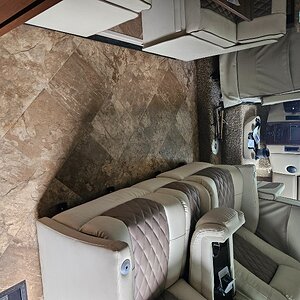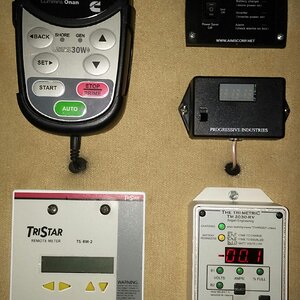- Joined
- Jan 19, 2021
- Messages
- 3,614
- Location
- Rosemary Farm
- RV Model
- Between RVs
- TOW/TOAD
- Toadless
- Fulltimer
- No
With 50amp service there is nothing to worry about. The outlet has two hots, a neutral, and a ground, as @MemoriesByTheMile said, and as long as its wired correctly, the RV will do the rest, as each hot is connected to its own bus bar in the on-baord panel, each with its own set of breakers, usually one group for the higher amperage stuff (AC units, elec dryers, etc) and one group for the lower amperage stuff which can also be supplied by the inverter running off the hosue batteries.Again tread lightly.
A dryer plug is 220, an electric water heater is 220, most welders are 220.
In a 50A RV you have 2 breaker boxes each 110V . Again use someone who knows what they are doing.
Where people get in trouble is with 30amp services, mistaking a 240v residential outlet (dryer, stove, welder, etc) for a 30amp RV service. Since the outlets are different, there should be no way to mix these up, but people make mistakes, and was thought to be a 30amp 120v RV service with a hot, neutral and ground, is actually a 240v outlet, as referenced by @DKRITTER with two hots and a neutral. The only way to plug a 30amp RV into this type of service is if someone has used the wrong outlet, but it happens. And with very unpleasant consequences.
So as @DKRITTER says, find someone who understands the difference before proceeding. As @TheLooks said, even electricians have made the mistake.












